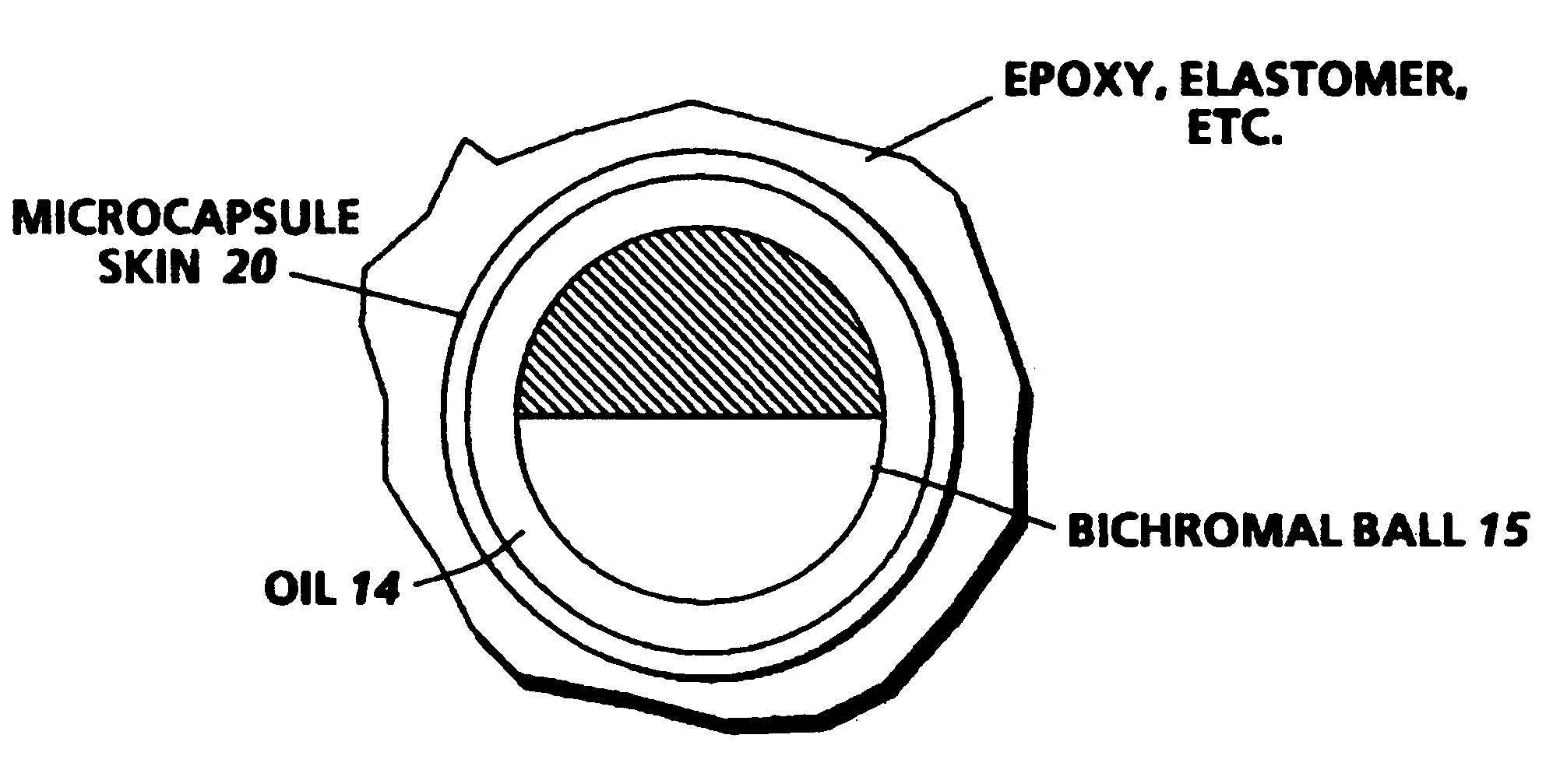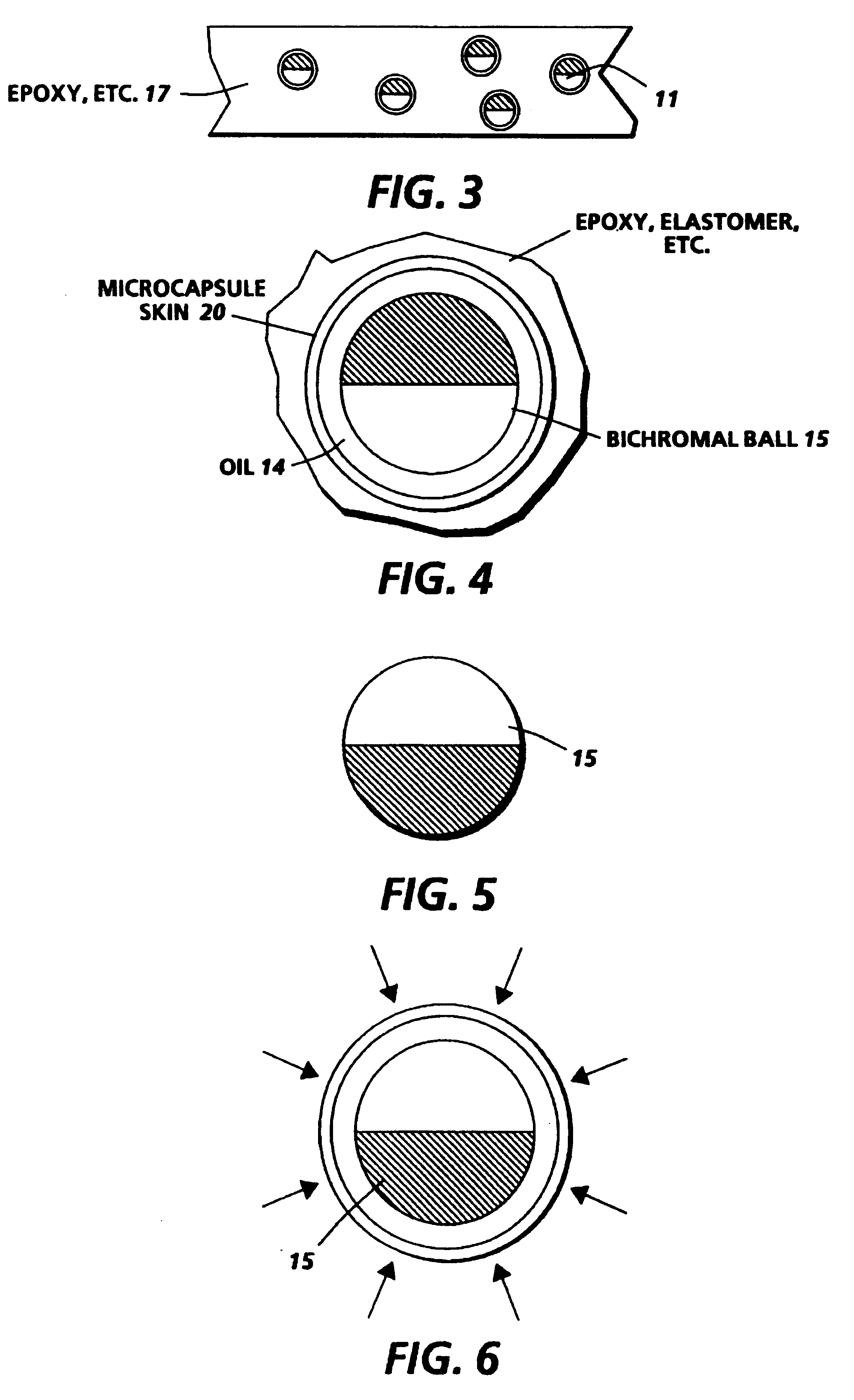Some uses of microencapsulation for electric paper
a technology of microencapsulation and electric paper, which is applied in the field of some uses of microencapsulation for electric paper, can solve the problems of affecting the appearance, the final product lacks some of the optical and tactile properties of paper, and the gel is soft and lacks durability, so as to achieve convenient conformation and greater flexibility of applications.
- Summary
- Abstract
- Description
- Claims
- Application Information
AI Technical Summary
Benefits of technology
Problems solved by technology
Method used
Image
Examples
Embodiment Construction
FIG. 1 is a cross section of the prior art version of this twisting ball display. A large number of bichromal balls 11 are mixed into an uncured elastomer which is subsequently spread into a thin layer 10 and cured to form a solid sheet of elastomer. Next this elastomer is soaked in a plasticizing oil which swells the elastomer but generally does not effect the bichromal balls. The result is that a spherical cavity 13 opens up around each bichromal ball, and this cavity subsequently fills with the plasticizing liquid. Finally the plasticized elastomer is bonded between two protective, transparent sheets of plastic or glass, 12, one or both of which might have a transparent .[.condicting.]. .Iadd.conducting .Iaddend.coating. FIG. 2 is an enlarged view of the bichromal ball 15 surrounded by plasticizing oil 14 within a cavity in elastomer 16.
The substrate material used in the prior art twisting ball display was largely limited to the class of elastomer materials, because these materia...
PUM
| Property | Measurement | Unit |
|---|---|---|
| color | aaaaa | aaaaa |
| electrical characteristics | aaaaa | aaaaa |
| adhesive | aaaaa | aaaaa |
Abstract
Description
Claims
Application Information
 Login to View More
Login to View More - R&D
- Intellectual Property
- Life Sciences
- Materials
- Tech Scout
- Unparalleled Data Quality
- Higher Quality Content
- 60% Fewer Hallucinations
Browse by: Latest US Patents, China's latest patents, Technical Efficacy Thesaurus, Application Domain, Technology Topic, Popular Technical Reports.
© 2025 PatSnap. All rights reserved.Legal|Privacy policy|Modern Slavery Act Transparency Statement|Sitemap|About US| Contact US: help@patsnap.com



